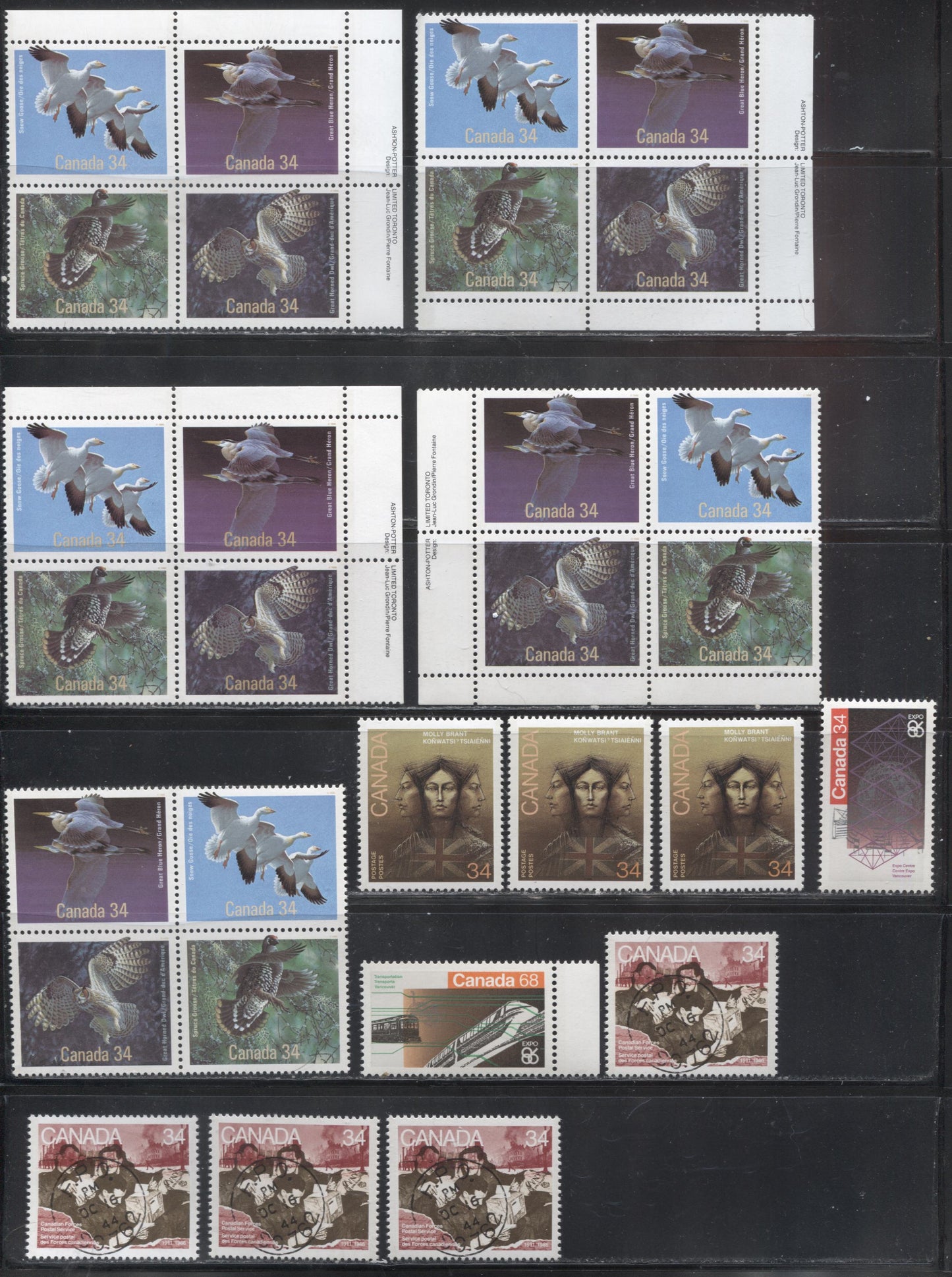Brixton Chrome
Canada #1091-1098a 1986 Molly Brant - Birds Issues, A Specialized Group of 9 VFNH Stamps and 5 Se-Tenant Blocks, All Printed on Different Papers - All Listed and Unlisted Variations
Canada #1091-1098a 1986 Molly Brant - Birds Issues, A Specialized Group of 9 VFNH Stamps and 5 Se-Tenant Blocks, All Printed on Different Papers - All Listed and Unlisted Variations
A VFNH group of 9 single stamps ad 5 se-tenant blocks from the 1986 Molly Brant issue through to the Birds issue, each printed on a different paper, and all identified on the back of the 102 card the stamps are in. Includes the better listed paper on the Canadian Forces Postal Service issue, plus numerous unlisted variants for both this issue and the other two issues.
Unitrade cat. for the stamps counting unlisted variations as their closest equivalent is $33.40. The stamps offered here grade between 75 and 84.
A Note About Paper in the 1983-1987 Period
The stamps during this period are printed primarily by Ashton Potter and BABN, and occasionally CBN. They used five main types of paper, all of which, with the exception of the the uncoated CBN paper are chalk coated. The five types are:
- A medium, chalk coated paper, supplied by Abitibi-Price, that tends to be DF and tends to contain any number of LF and MF fibres. Unitrade often describes this paper as DF, and it can indeed be DF with no fluorescent fibres visible, but it can also include a lot of LF and MF fibres as well. Generally if the paper still reads overall as DF or NF, then it will be considered a variation of DF. Once it reads as LF, then it moves into that category. However, there may be 2-4 sub-types of each of these types of paper. This was the most commonly used paper during this period. The default level of fluorescence for most issues is DF, or DF with some fluorescent fibres. True DF/LF-fl paper does occur on some issues and is listed for most issues where it does occur, but it is generally quite scarce and is often mis-idenified because there are a lot of DF variants that contain some small amount of fluorescent fibres that are just variatons of DF. Much of what Unitrade calls LF during this period can appear almost MF.
- Harrison paper - for many years it was assumed that this paper only existed as DF or NF. However, in recent years it has been discovered that some of the early Harrison papers are fluorescent on the front, the back or both. Generally, the paper is thick and the gum causes the paper to curl - either horizontally or vertically. The gum itself is often bluish, but sometimes it is also cream coloured and can be either smooth or streaky. Some of the differences in appearance under UV light may be attributed to the gum, but it is difficult to be certain. However, the paper can be LF, MF, DF and NF on either the face or the back.
- Clark paper - this paper is softer than the other papers being more pliable and usually has a cream gum. It is dead on the face under UV usually and either NF or DF on the back. That being said, there are some versions of it that appear LF or DF flecked.
- Rolland paper - This is the most amazing paper of the modern era in the sense that it exhibits the most variaton. It is a dead white coated paper that is very stiff. Unike other papers where the face reaction under UV is almost always duller than the reaction on the back, the paper can give two wildly different reactions under UV, ranging from dead to HB. There are not usually any fluorescent fibres in the paper.
- Slater paper - this is similar to Clark paper in terms of its pliability and texture. Like Clark, it is always either DF or NF under UV on both the front and back. I have yet to find a fluorescent variety of this paper.
As you can see great care has to be taken to properly identify papers during this period. It must be appreciated that the terms NF and DF are not interchangeable. DF is a dull bluish or greyish white that lacks brightness, but still emits a very low level of light under UV. NF on the other hand must appear either deep violet, deep grey or deep blue and not be reflecting any, or very little light.
Share


